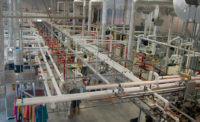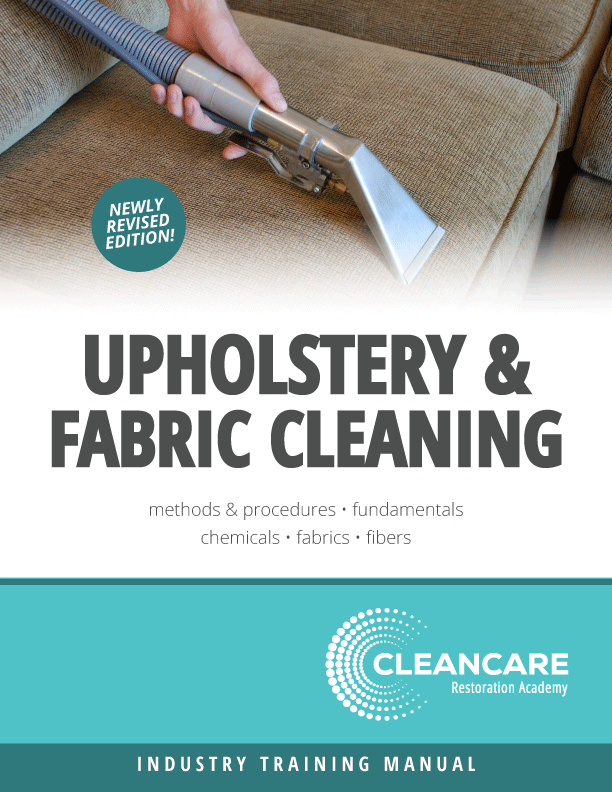Textile Restoration: The Process, Science and Value Proposition








“Today, there’s so much specialization out there that’s available to the restoration market. The insurance companies can engage a roofer, flooring programs, textile restoration, electronics companies, art restoration, blind companies, mitigation-specific services. General contractors are just one of the specialties that are out there. What we’re seeing is whenever a carrier can go direct to a subject matter expert on whatever the category is, they prefer to do that because we effectively can act as their eyes and ears on the loss, educate the homeowner in the process and feed back the correct information to the insurance companies so the adjuster can make a decision.”
That’s Wayne Wudyka, CEO, Certified Restoration Drycleaning Network (CRDN).
It’s estimated that soft contents accounts for up to 23% of the total items on a pack out, making it the single largest contents category by volume. And it’s not just clothes that a textile restoration professional can restore, but window treatments, area rugs, shoes, leathers, furs, suede, belts, hand bags, purses, pocket books, luggage, hockey bags, ice skates, golf bags, etc. The list goes on and on.
But what makes soft contents restoration so crucial on any water or fire job is the economics of it. Specifically, it’s estimated that the value proposition for the homeowner and the carrier is about 80% savings versus replacement. With a success ratio in the high 90% range, this is significant.
“If we’re saving 80% on the largest category, there are dollars left over on the contents coverage to replace items that can’t be restored in some cases,” Wudyka says. “Your high ticket items, appliances, electronics, computers, art – there’s dollars left in contents coverage to make the homeowner whole.”
Technological Investment
It’s mid-November when R&R tours Huntington Cleaners and CRDN of Michigan and Northwest Ohio, a dry cleaning facility in Huntington Woods, MI that also served as the founding home office for CRDN in 1992 before the network was launched in 2002. In fact, Huntington Cleaners is Michigan’s only Certified Master Drycleaner specializing in garment restoration for the insurance industry. It’s the regional venue where restorative textile cleaning begins internally, and while the facility is certainly equipped with all the necessary equipment to handle a soft contents loss, some restoration work – depending on workload and other circumstances – may also be done in nearby Oak Park facilities.
Wudyka says soft contents work stays pretty consistent all year round, but 2014 is shaping up to be a busier year – at least regionally – thanks in part to last winter’s polar vortex and more recently to the record-setting flooding that occurred in southeast Michigan last August, putting some 34,000 homes under water.
We pass a row of washing machines, of which there are over 50 different chemical formulas programmed into each to allow operators to restore clothes based on their situation.
“There’s very much a chemistry and a science to restoring clothes,” Wudyka says. “When you add a significant higher level of contamination that’s come out of a fire or a flood or a mold situation or an odor, the chemistry and the knowledge around proper handling goes up exponentially. It’s not a part-time job, textile restoration is a full-time job.”
Wudyka estimates that there’s several million dollars’ worth of investment between all the cleaning, inventory, processing, packaging and storing technology and equipment inside the facility.
“You get into a sizable footprint,” he says. “You can take the belongings of an entire house and process that in any given timeframe.”
The Process
While the cleaning and restoration of textiles and soft goods that goes on inside of the plant is crucial to the process, it’s what happens before the items are even packed out that is arguably just as important. The process starts when the initial call comes, usually either from an adjuster, contractor or homeowner.
“We try to get as much information as we can,” starts Luis Garascia, CSR Manager. “We talk to the homeowner about what happened, what we can help them with. We talk to the homeowner about valuables, about immediate needs and any little things that they need – things that are important to them. We try to get a feel for how they sound on the phone, whether they sound like they’re in peril or if they need a little time. We then take that information and we add it into our system.”
A first responder and crew is then assigned to the site, where more information is gathered from the homeowner and the inventory and pack out step begins. Items are photo documented on site, then packed out, returned to the plant and added to the inventory system. Garments are detailed based on their characteristics and examined for any pre-existing conditions.
After that, the cleaning and restoration process begins. Two weeks’ worth of items are immediately processed and returned to the homeowner within 24 hours, while all remaining items are cleaned, restored and returned at a later date, sometimes as fast as two to four days.
Fire vs. Water
Just as there’s a significant difference between working on fire damage jobs versus water damage ones, there’s a big difference in restoring soft contents affected by the aforementioned.
For instance, with water damaged textiles, before they can even be dry cleaned, they need to be dried – and dried fast for best results. Waiting too long to dry can result in mold, color degradation and breakdown of the fabric.
“We cannot introduce moisture into the dry cleaning process or we will create shrinkage,” Wudyka says. “Shrinkage occurs in the dry cleaning element when three items are present – heat, moisture and agitation. If you have all three of those elements present at the same time, you’re going to experience shrinkage.”
Hence, water-damaged items are dried in specialty drying chambers, where dehumidifiers and air movers effectively wick away moisture without agitation, after which they can be loaded into the machines to continue the restoration process.
Conversely, items recovered from a fire loss can be loaded right into dry cleaning machines – the sooner the better. Why? Because the longer hydrocarbon sits on the garment, the more difficult it is to get out.
“In either case, speed is required and know-how is required and having the right tools, technology and chemistry is absolutely crucial - that’s all got to come together in real-time at the same time,” Wudyka says. “You’ve got to be agile and be able to look at and assess every situation.”
Note:
To see CRDN of Michigan and Northwest Ohio in action, visit www.RandRMagOnline.com/videos
Looking for a reprint of this article?
From high-res PDFs to custom plaques, order your copy today!













